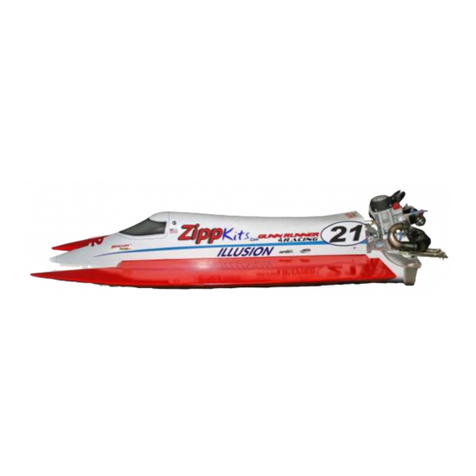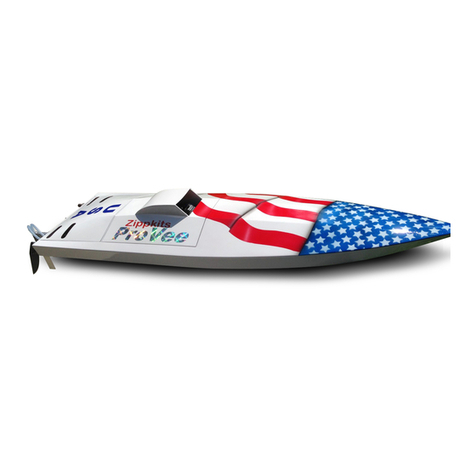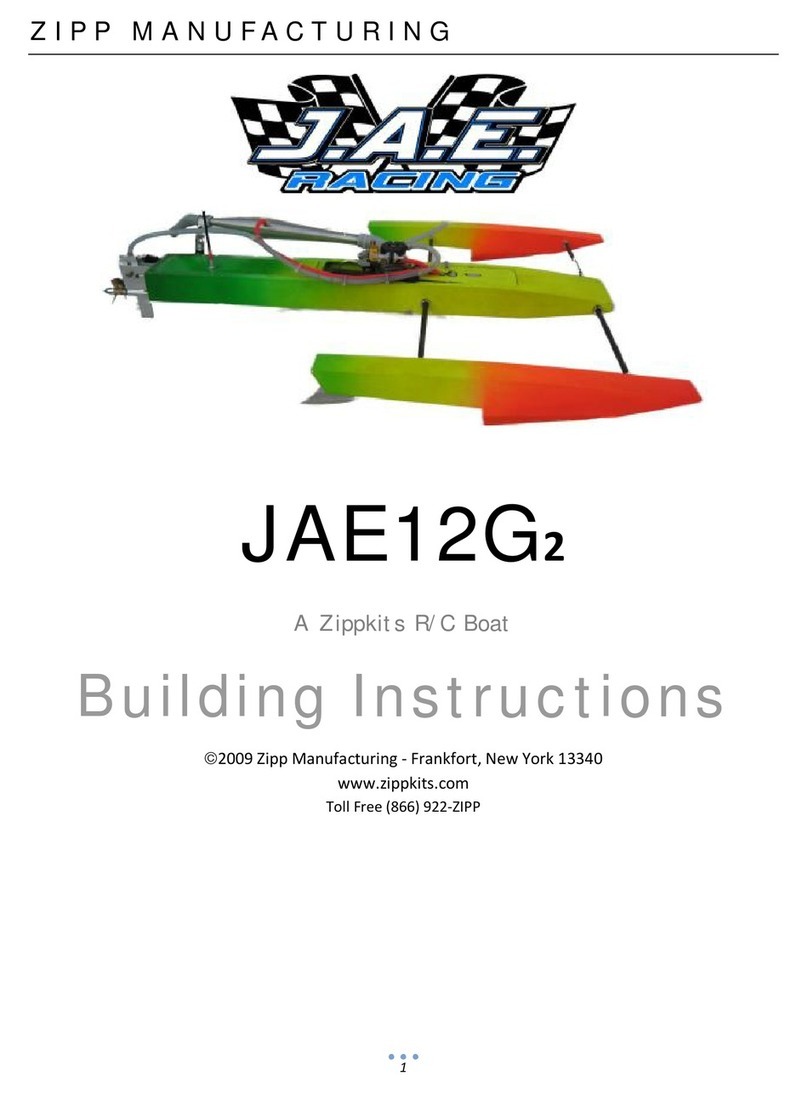
R I V E T T / R O C K E T T
Additional items needed to complete:
Gasoline engine with 5 inch mounts
.250 Collet for engine (Zipp 3440)
.250 36 inch cable w/welded stub shaft (Zipp 3445)
Tuned pipe (Zipp 2011)
2 channel surface radio with 1 standard and 1 heavy duty servo (100 in/oz minimum)
Throttle pushrod (2-56 or 4-40 Size) with Clevises (Zipp 3462 and 3459)
2- 4-40x12 Pushrods (Zipp 3463)
¼” OD carbon pushrod
2 pushrod seals (Zipp 3404 or 3422)
16 ounce Fuel Tank or IV Bag(gasoline compatible)
.250 strut (Zipp 3416)
.250 drive dog (Zipp 3442 or 3448)
6518/3 or 6717/3 prop (Zipp 4003)
Prop nuts (Zipp 3450)
Engine Mounts (Zipp 3409 for Zenoah)
Cable grease
Large rudder (water pickup type) (Zipp 3413)
5 feet large silicone tubing (water line) (Zipp 3461)
12 inch length of 11/32 brass tubing (Zipp 3453)
36 inch length of 5/16 brass tubing (Zipp 3452)
Floatation (pool noodles, foam, etc.)
Before we can start building, we need to do some prep work. Good prep work will pay off later
with a straight, true running boat.































